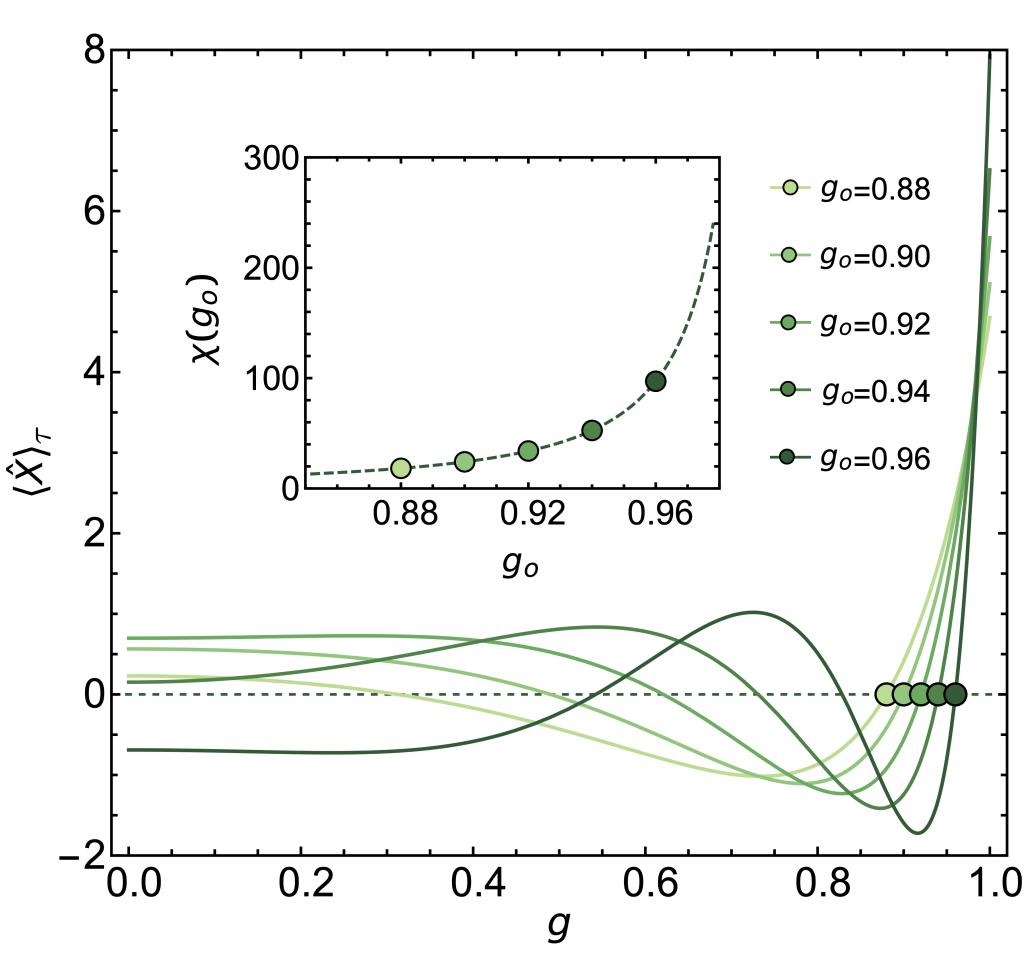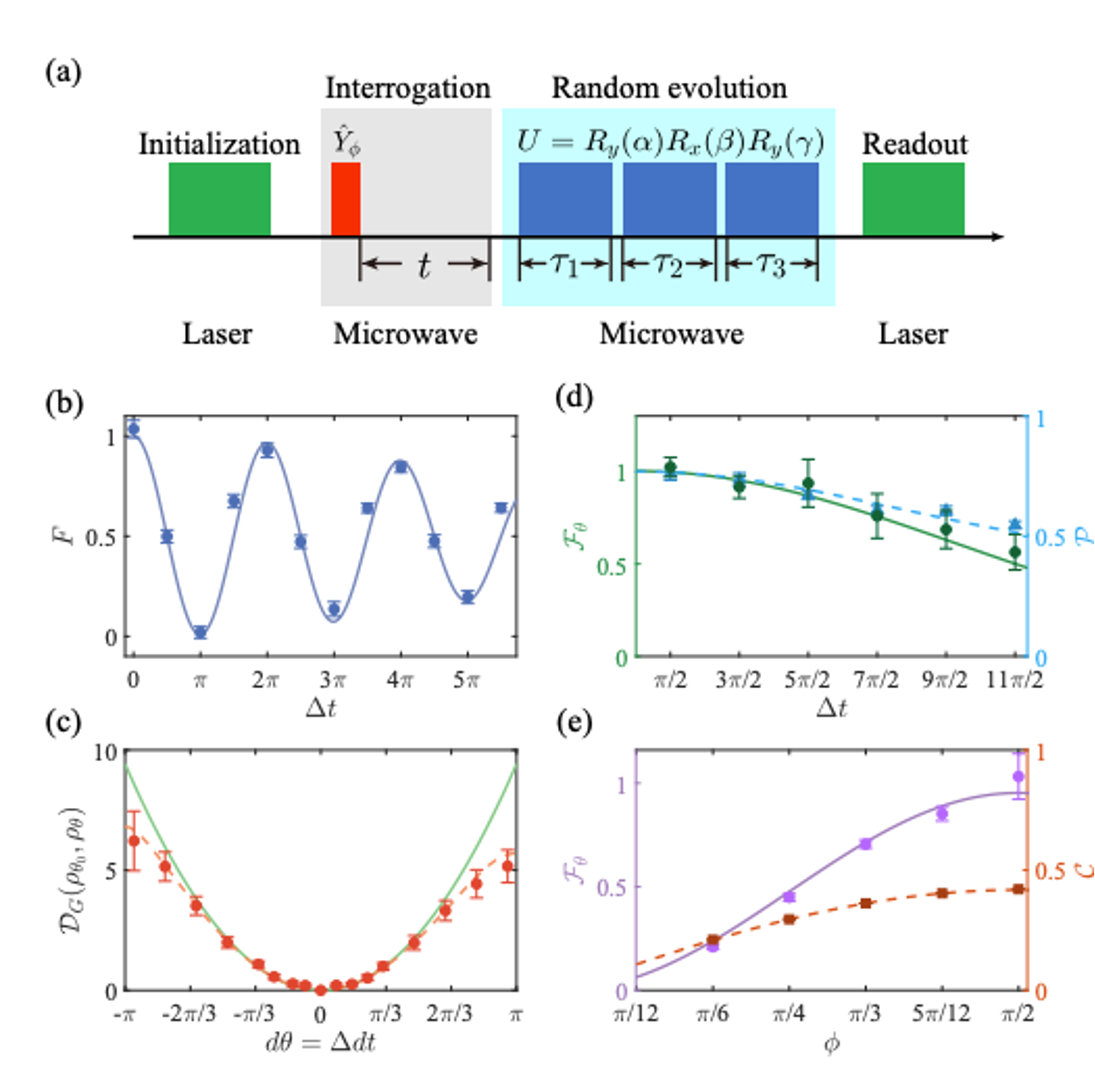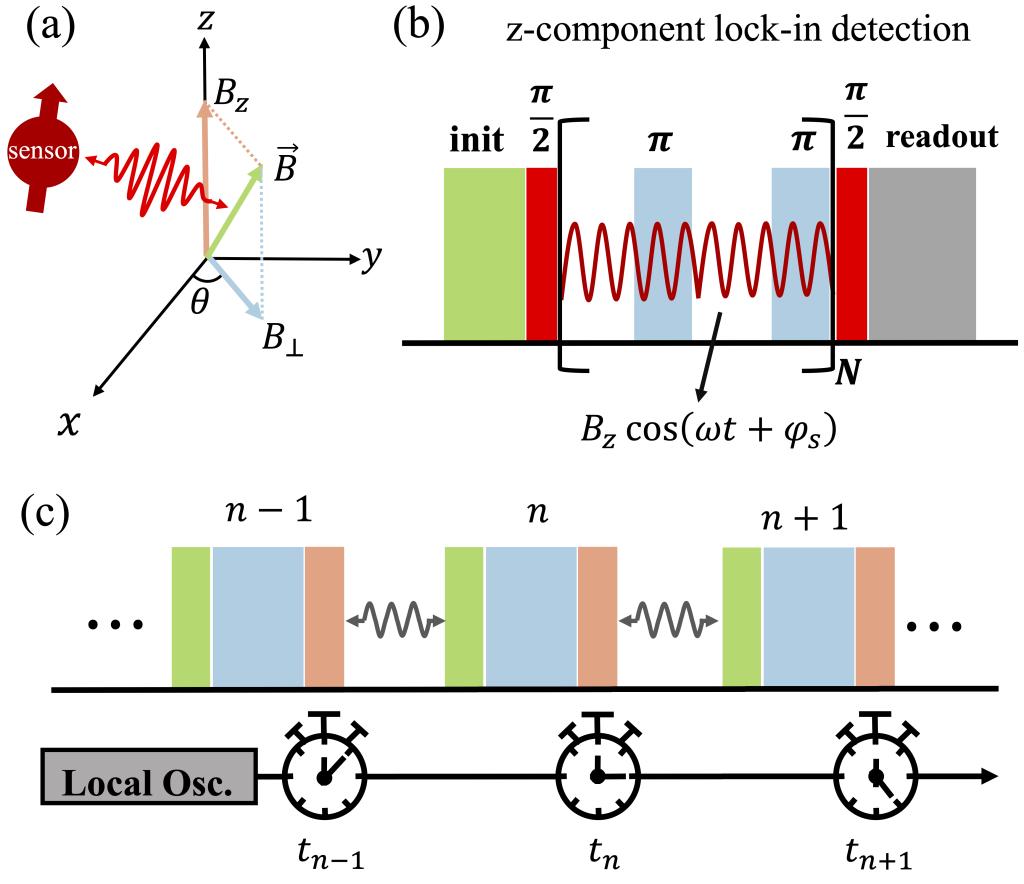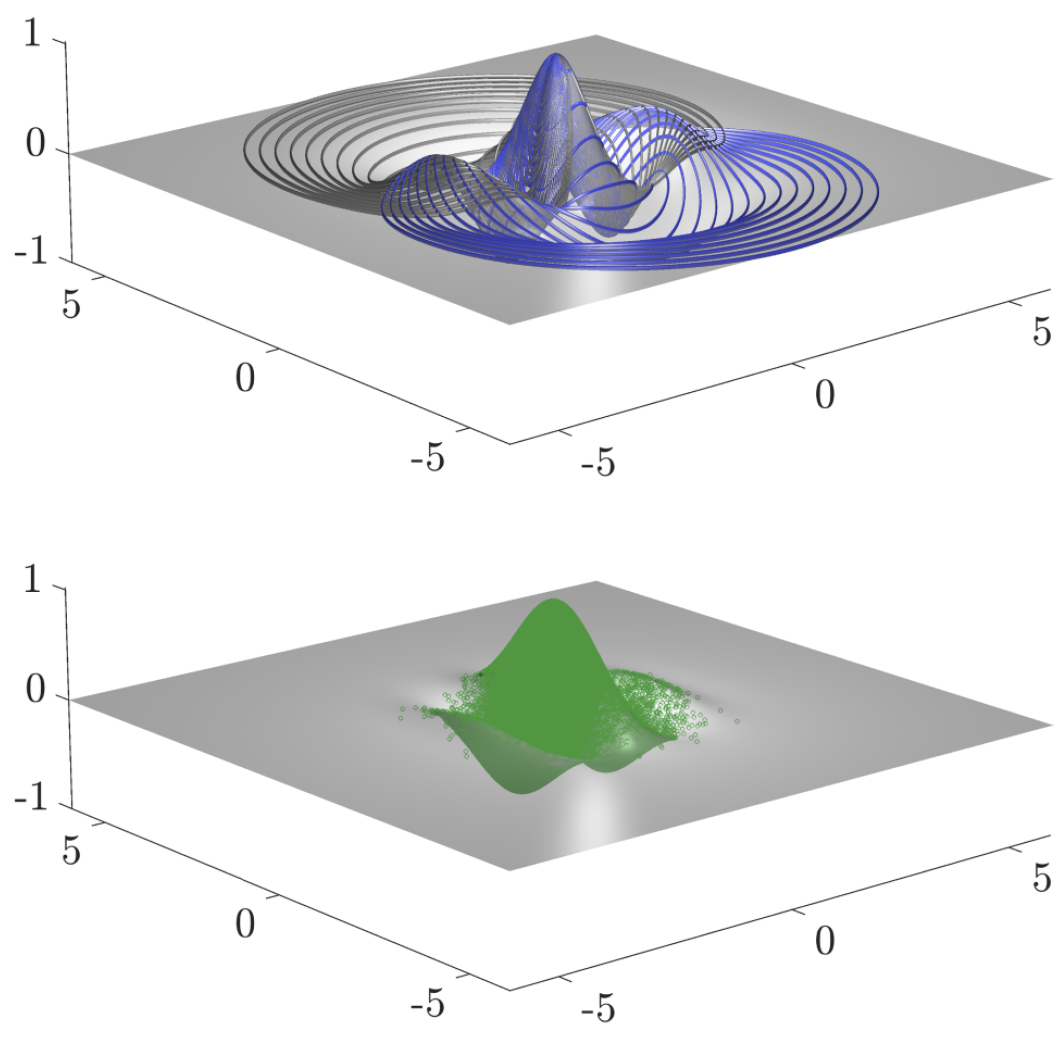
Yaoming Chu, Shaoliang Zhang, Baiyi Yu, and Jianming Cai
Quantum criticality, as a fascinating quantum phenomenon, may provide significant advantages for quantum sensing. Here we propose a dynamic framework for quantum sensing with a family of Hamiltonians that undergo quantum phase transitions (QPTs). By giving the formalism of the quantum Fisher information (QFI) for quantum sensing based on critical quantum dynamics, we demonstrate its divergent feature when approaching the critical point. We illustrate the basic principle and the details of experimental implementation using quantum Rabi model. The framework is applicable to a variety of examples and does not rely on the stringent requirement for particular state preparation or adiabatic evolution. It is expected to provide a route towards the implementation of criticality-enhanced quantum sensing.

Min Yu, Dongxiao Li, Jingcheng Wang, Yaoming Chu, Pengcheng Yang, Musang Gong, Nathan Goldman, Jianming Cai
The quantum Fisher information (QFI) represents a fundamental concept in quantum physics. On the one hand, it quantifies the metrological potential of quantum states in quantum-parameter-estimation measurements. On the other hand, it is intrinsically related to the quantum geometry and multipartite entanglement of many-body systems. Here, we explore how the QFI can be estimated via randomized measurements, an approach which has the advantage of being applicable to both pure and mixed quantum states. In the latter case, our method gives access to the sub-quantum Fisher information, which sets a lower bound on the QFI. We experimentally validate this approach using two platforms: a nitrogen-vacancy center spin in diamond and a 4-qubit state provided by a superconducting quantum computer. We further perform a numerical study on a many-body spin system to illustrate the advantage of our randomized-measurement approach in estimating multipartite entanglement, as compared to quantum state tomography. Our results highlight the general applicability of our method to general quantum platforms, including solid-state spin systems, superconducting quantum computers and trapped ions, hence providing a versatile tool to explore the essential role of the QFI in quantum physics.

Yaoming Chu, Pengcheng Yang, Musang Gong, Min Yu, Baiyi Yu, Martin B. Plenio, Alex Retzker, and Jianming Cai
Precise spectroscopy of oscillating fields plays a significant role in many fields. Here, we propose an experimentally feasible scheme to measure the frequency of a fast-oscillating field using a single-qubit sensor. By invoking a stable classical clock, the signal phase correlations between successive measurements enable us to extract the target frequency with extremely high precision. In addition, we integrate dynamical decoupling technique into the framework to suppress the influence of slow environmental noise. Our framework is feasible with a variety of atomic and single solid-state spin systems within the state-of-the-art experimental capabilities as a versatile tool for quantum spectroscopy.

Ralf Betzholz, Yu Liu, and Jianming Cai
We present a method for the direct measurement of the Wigner characteristic function of a thermalizing harmonic oscillator that is completely inaccessible for control or measurement. The strategy employs a recently proposed probe-measurement-based scheme [Phys. Rev. Lett. 122, 110406 (2019)] which relies on the pulsed control of a two-level probe. We generalize this scheme to the case of a nonunitary time evolution of the target harmonic oscillator, describing its thermalization through contact to a finite-temperature environment, given in the form of a Lindblad master equation. This generalization is achieved using a superoperator formalism and yields analytical expressions for the direct measurement of the characteristic function, accounting for the decoherence during the measurement process.
| |
版权所有 Copyright(C) 2018 华中科技大学量子传感与量子测量国际联合实验室